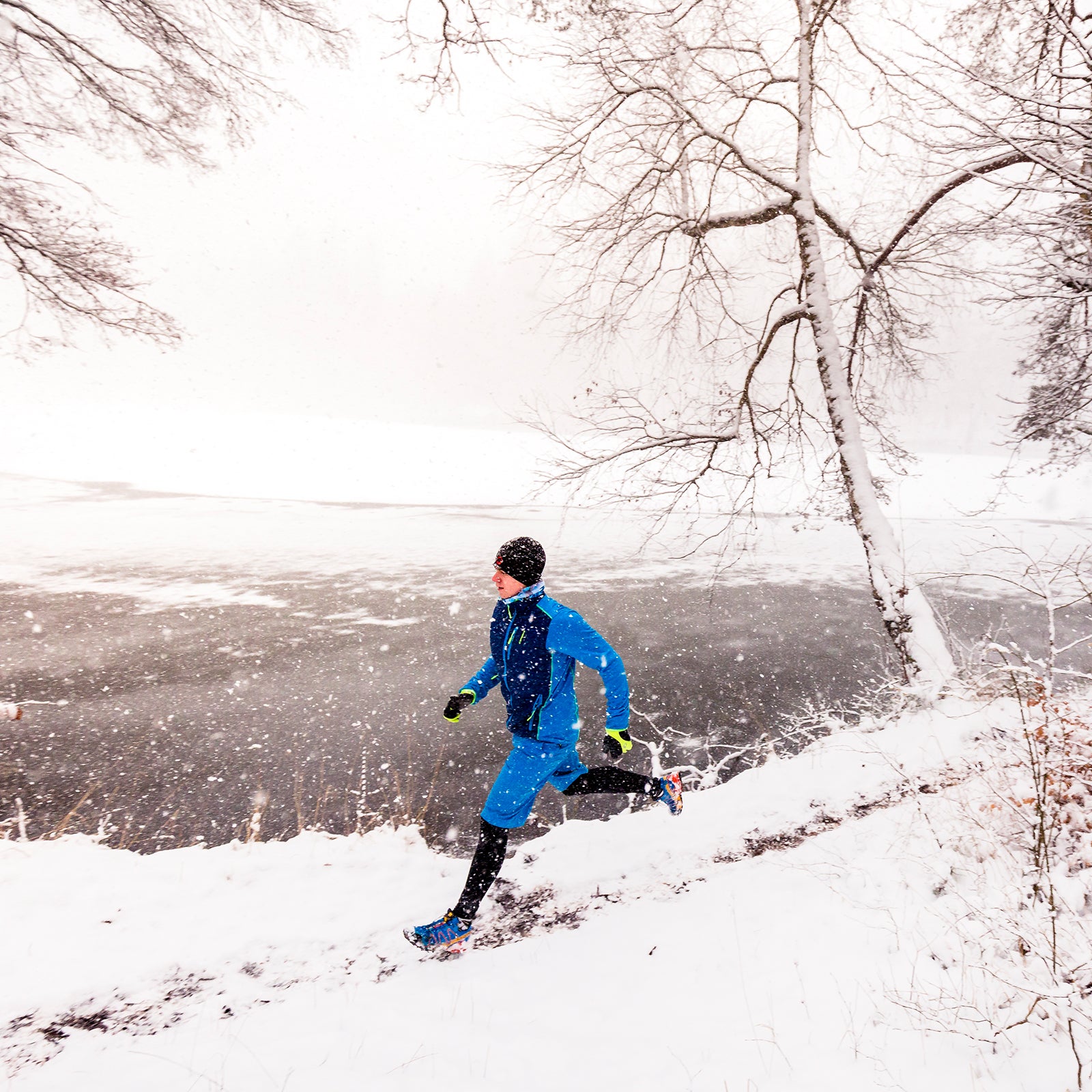Icy trails, freezing temperatures, and fewer hours of daylight are all��valid reasons to skip out on winter trail runs.��But with a couple extra layers��and a little advance��planning, you can leave the excuses��and the treadmill��behind this winter.
The��chilly��air hasn’t stopped professional mountain runner from training for New Zealand’s this winter. The athlete, who is based in Boulder, Colorado, stuffs his CamelBak ��($120) with everything��he needs for a day in fluctuating conditions—because it’s better to have it and not need it��than to need it and not have it.
“We have snow and ice and temperatures that get down into the single digits,” Canaday says. “It’s important to have a full spectrum of gear for all conditions, because through the course of a long run, the weather can change.”
Depending on where you live, winter conditions can range from balmy to blizzardy, and whether you’re jogging on a gravel trail near your house or ascending a steep mountain, comfort and safety are key. We asked��Canaday for tips on what gear to have in your trail-running kit this season.
Apparel
Because body temperature varies from person to person, layering philosophies do, too. Canaday��opts for shorts and ��($39) when it’s dry and sunny but chilly, but he prefers��moisture-wicking tights��for colder, wet conditions, like Patagonia’s ��($119) (a comparable version for women is the��, $99). In sleet and snow, he suggests waterproof bottoms, like ��($119). For men, when temperatures drop below about 25 degrees and you’re planning a run an hour or more, Canaday also recommends wind-resistant underwear, like ��($65).
Just��like during shoulder season, you’ll want to keep your core warm with base, mid-, and outer layers. “I always carry an extra base layer or jacket in my vest, just in case I need more layers or if something��gets wet and I have to switch out gear,” he says.
Canaday advocates for��a next-to-skin synthetic or wool layer to keep you dry and stink-free. We like����($85) or ��($78).��For women, we recommend a wool sports bra, like the����($70), which��is supportive and doesn’t��leave��you cold when wet. An insulating midlayer adds much needed warmth, says Canaday. Patagonia’s Capilene Thermal Weight Zip-Neck top (��and ��both $99) is our favorite. And finally, he suggests a breathable shell to resist wind and weather. We like��the��Daehlie Winter Run jacket��(wo�����’s, $150) or����(�����’s, $90). He says that vests, like the ��($100), are good for warming your core and blocking wind without restricting movement or overheating your arms.
Head and Extremities
If your ears and fingers are freezing, you’re more likely to cut your run short. That’s why gloves and a sweat-wicking beanie are some of the most important pieces in Canaday’s��winter kit.
He��recommends a lightweight glove��and, depending on how cold your hands get, a thicker pair of mittens or a few hand warmers, like ��($30). Bonus: when your nose starts to run, gloves make convenient snot rags.
Any fleece or wool beanie will do, or try a headband under a brimmed hat to keep the sun off your face. The ��($22) or the����($19) will both stave off numbness.
“If it’s below 20 degrees Fahrenheit, you want to protect your airways,” Canaday says. “It’s good to have something to cover your neck that stretches up over your nose. It keeps the moisture of your breath in and the area warm. Some people, on really extreme days, will even wear a face mask.” A neck warmer—like the ��($20) or ��($22)—can prevent icy air from drying out your mouth, throat, and lungs. Other runners will smother their faces in ��($9) or����($7) to prevent windburn and frostbite in frigid��conditions.
To protect his eyes, Canaday wears polarized sunglasses, like Roka’s ��($150). “In Colorado, we’ll have days where there’s a lot of snow on the ground��but it’s really sunny. The sun reflecting on the snow can hurt your eyes,” he��says. “I wear visor-style cycling glasses to protect the area around my cheekbones and forehead.”
Footwear
To safely traverse ice patches and snowfields, you need two things: trail shoes and traction devices.��Canaday��swears by ��($70). “They’re little metal triangles that dig in,” he��says. “On my trail run last week, I didn’t know what the trail conditions were, but I had them in my vest in case I encountered some really gnarly sections. They pack down pretty well.”
He slips the Microspikes over his ��($120) or ��($145) trail shoes, available for��men and women. Both have outsole traction and multidirectional lugs for added grip. Most of the time, Canaday wears his namesake ($30). In wetter, snowier conditions, he��covers his ankles with Drymax’s��thick, high-cut ��($54).
Water, Food, and Other Essentials
Prevent breaking a tooth on a stroopwafel or having to suck on ice by storing your hydration and nutrition closer to your body, along with your cell phone, watch, or other electronics to . Canaday keeps an insulated bladder, like ($50), in his running vest. For shorter runs, an insulated bottle like ��12-ounce flask ($32) gets the job done.
To replenish calories, Canaday consumes ��($20 for a pack of ten), which doesn’t freeze and still tastes good when chilled. “When it gets super cold, some brands’ gels turn into something really sick that’s hard to slurp down,” he��says.


